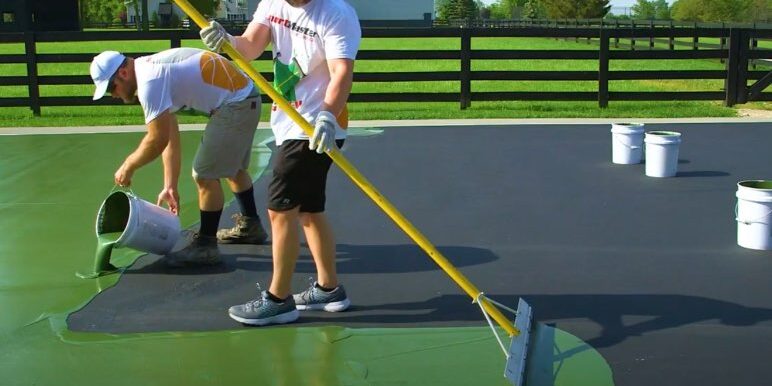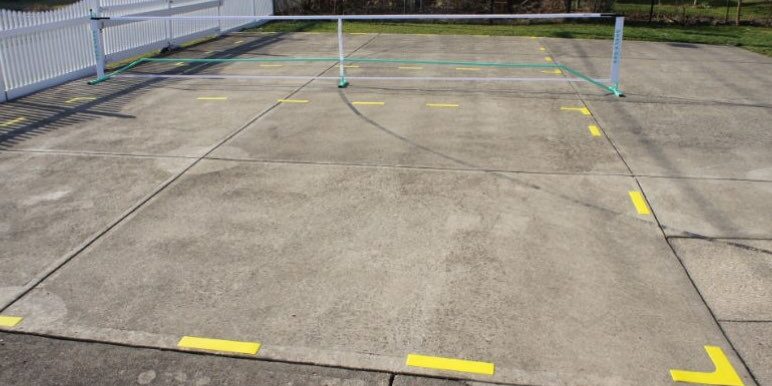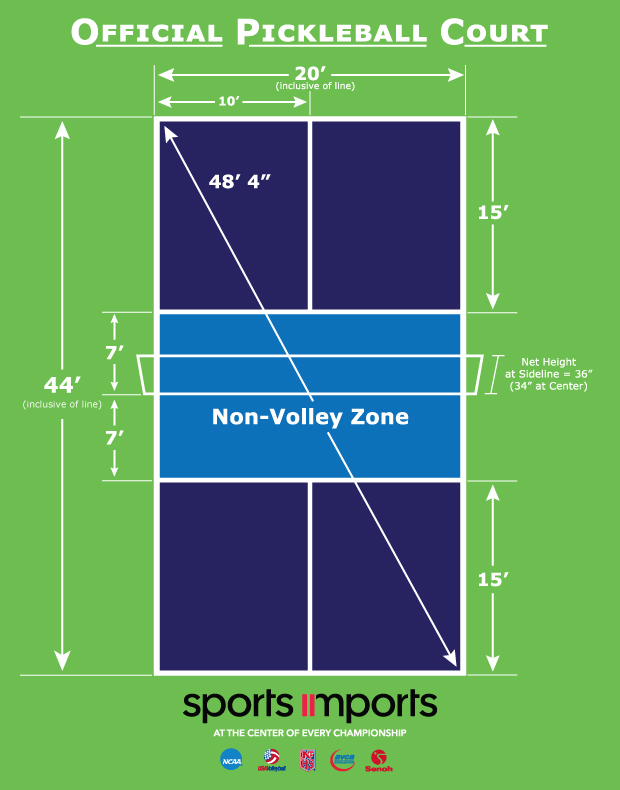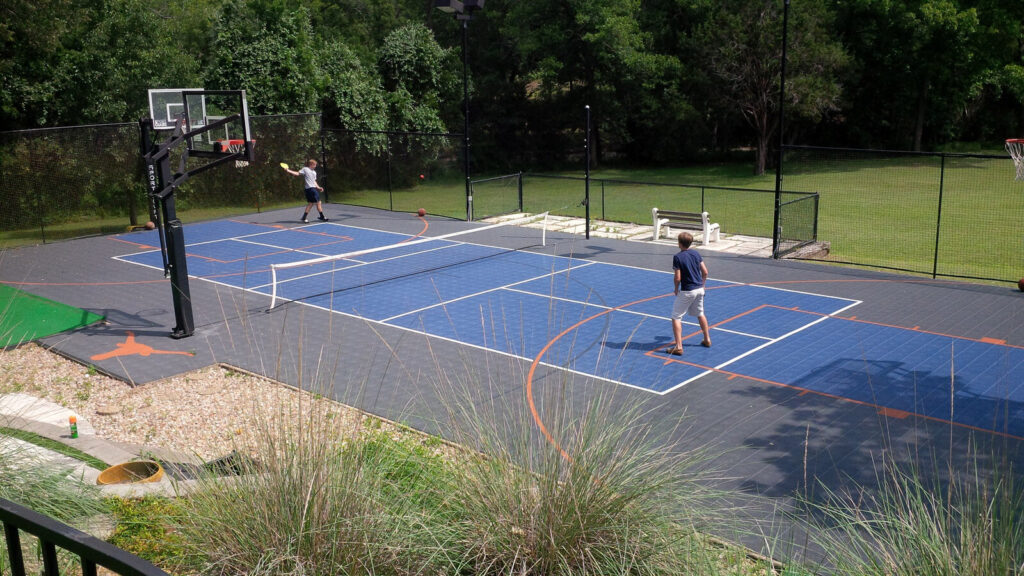Yes, pickleball can be played on concrete, but it is important to ensure that the concrete is in good condition and the surface is smooth to minimize injuries and provide a consistent ball bounce. Additionally, using a cushioned pickleball court surface or adding a rubber mat or layer can help reduce joint impact and improve player comfort.
It is also advised to consult with a pickleball court construction specialist to ensure that the concrete base is properly installed and meets the recommended specifications for slope, drainage, and surface finish. Overall, playing pickleball on concrete is suitable for more advanced players and competitive tournaments due to the faster and higher ball bounce on harder surfaces.

Credit: usapickleball.org
Understanding Pickleball Surfaces
When considering playing pickleball, it’s essential to understand the impact of different surfaces on the game. Each type of surface influences the speed and bounce of the ball, making it important to choose the right court for your needs. Let’s delve into the characteristics of various pickleball surfaces and explore how they affect the game.
Concrete And Asphalt Surfaces
Concrete and asphalt are popular choices for pickleball courts due to their durability and low maintenance. These hard surfaces are favored by advanced players and for competitive play, as they result in faster and higher ball bounce. However, it’s crucial to ensure the surface meets specific requirements for slope, drainage, and finish to optimize playability.
Clay And Grass Surfaces
While concrete and asphalt surfaces dominate pickleball courts, there’s a growing trend towards clay and grass surfaces. These natural surfaces offer a unique playing experience and are often favored for recreational play or as a leisure activity. The softer nature of these surfaces impacts the ball’s bounce and speed, providing a different dynamic to the game.
Pros And Cons Of Concrete Courts
When it comes to choosing a surface for playing pickleball, concrete courts have both pros and cons. Let’s take a closer look:
Durability And Low Maintenance
One of the biggest advantages of concrete courts is their durability. Concrete is a solid and long-lasting material that can withstand heavy use over time. It can handle the constant impact of pickleballs and the movements of players without wearing out quickly. This makes it a great choice for those looking for a court that will last for years to come.
In addition, concrete courts require low maintenance. Unlike other surfaces that may need frequent repairs or resurfacing, concrete courts can be easily maintained with regular cleaning and occasional sealing. This means less time and money spent on upkeep, allowing players to focus more on the game.
Cracking Issues
However, one drawback of concrete courts is the potential for cracking. Over time, concrete can develop cracks due to various factors such as temperature changes, moisture, or heavy load. These cracks can affect the playing surface, causing uneven bounces and potentially posing safety hazards for players.
To minimize cracking issues, it is recommended to properly prepare the base and install expansion joints on the concrete court. These joints allow the concrete to expand and contract with temperature changes, reducing the likelihood of cracks forming. Regular inspections and prompt repairs can also help maintain the integrity of the court.
In conclusion, concrete courts have their advantages and drawbacks. They offer durability and low maintenance, making them an excellent choice for long-term use. However, cracking issues should be addressed to ensure a safe and enjoyable playing experience.
Choosing The Best Surface For Pickleball
When it comes to playing pickleball, one of the most crucial factors to consider is the surface on which the game will be played. The surface determines the speed and bounce of the ball, as well as the overall playing experience. In this article, we will explore the different considerations for choosing the best surface for pickleball, whether it’s an outdoor court or an indoor facility.
Considerations For Outdoor Courts
Outdoor pickleball courts are typically made with either concrete or asphalt. Both surfaces have their pros and cons, so it’s important to weigh your options before making a decision.
Concrete courts are known for their durability, low maintenance, and crack resistance. They provide a solid surface that offers consistent ball bounce, making it ideal for more advanced players and competitive tournaments. However, playing on concrete can be harsh on the joints, as it offers little to no shock absorption. Therefore, it is recommended to use proper footwear and knee pads for added protection.
On the other hand, asphalt courts are slightly more forgiving in terms of impact. They provide a slightly softer surface compared to concrete, which can reduce the strain on players’ joints. However, asphalt courts are prone to cracking, so regular maintenance is necessary to ensure a smooth playing experience.
Overall, both concrete and asphalt surfaces can be suitable for outdoor pickleball courts. It ultimately comes down to personal preference and the level of competition you are looking for.
Considerations For Indoor Courts
When it comes to indoor pickleball courts, there are additional considerations to keep in mind. Indoor facilities often have different flooring options, each with its own advantages.
One popular choice for indoor pickleball courts is hardwood flooring. Hardwood courts provide a smooth and fast surface, allowing for quick movements and precise shots. The ball bounces well on hardwood, making it suitable for competitive play. However, hardwood flooring can be expensive to install and maintain, so it’s not always a feasible option for everyone.
Another option for indoor courts is synthetic flooring, such as rubber or vinyl. Synthetic surfaces offer good traction and shock absorption, making them comfortable to play on for extended periods. They are also generally more affordable and easier to maintain compared to hardwood. However, the ball may not bounce as high on synthetic surfaces, which can affect the dynamics of the game.
When choosing the best surface for an indoor pickleball court, it’s crucial to consider factors such as budget, maintenance requirements, and the level of play. Each flooring option has its own unique characteristics that can enhance or impact the overall playing experience.
Choosing the best surface for pickleball is a decision that should be based on various factors such as personal preferences, budget, and the level of competition. Whether it’s an outdoor court made of concrete or asphalt, or an indoor facility with hardwood or synthetic flooring, each surface option has its own advantages and considerations. By carefully evaluating these factors, players can create an optimal playing environment that suits their needs and enhances the enjoyment of the game.

Credit: issuu.com
Tips For Playing Pickleball On Concrete
When playing pickleball on concrete, it’s essential to consider specific tips for maximizing player safety and optimizing ball bounce. Here are some crucial tips to keep in mind:
Protective Measures For Players
- Wear supportive and cushioned footwear to reduce impact on the joints.
- Apply sunscreen to protect the skin from sun exposure, especially on outdoor concrete courts.
- Use knee and elbow pads for added protection during play.
Tips For Maximizing Ball Bounce
- Choose a paddle with a responsive surface to optimize the ball bounce on concrete.
- Ensure proper net tension to maintain an appropriate ball height during rallies.
- Regularly inspect the concrete surface for cracks or uneven areas that can affect ball bounce.

Credit: keystonesportsconstruction.com
Frequently Asked Questions On Can Pickleball Be Played On Concrete
Can Pickleball Bounce On Concrete?
Yes, pickleball can bounce on concrete. Concrete is a harder surface, making the ball bounce faster and higher, which is suitable for advanced players and competition.
Is Asphalt Or Concrete Better For Pickleball Court?
Both asphalt and concrete are suitable for pickleball courts, but each has its own benefits and drawbacks. Concrete courts are more durable, low maintenance, and crack resistant. On the other hand, asphalt courts may crack over time. It is important to consider factors such as slope, drainage, and surface finish when choosing the appropriate material for the court.
What Surface Can You Play Pickleball On?
Yes, pickleball can be played on concrete and asphalt, ideal for advanced players and competitions. Concrete courts are durable, low maintenance, and crack-resistant, offering a fast and high ball bounce. Surfaces like clay and grass are also trending for pickleball courts.
What Is The Best Floor For Pickleball?
Concrete, asphalt, and rubber gym flooring are the best floor options for pickleball. These surfaces provide maximum ball bounce and are ideal for competitive play. Concrete and asphalt are commonly used, while rubber surfaces offer excellent ball bounce.
Conclusion
Pickleball can indeed be played on concrete surfaces. However, it is essential to consider the surface’s durability, maintenance, and impact on gameplay. Concrete offers a faster and higher ball bounce, making it suitable for advanced players and competitive play. Proper surface preparation is crucial for an enjoyable pickleball experience on concrete courts.
Neil jacobson is an avid Pickleball enthusiast, writer, and coach dedicated to sharing the joy and intricacies of the sport. With 6 years of experience on the court and a passion for teaching, Courtney brings a unique perspective to his writing, offering practical insights and strategies for players of all levels. As a certified Pickleball coach, his mission is to inspire and empower individuals to excel in the game while fostering a sense of community within the Pickleball world. Through his articles, guides, and coaching sessions, Neil aims to elevate the playing experience and share the infectious enthusiasm that defines the Pickleball community.



